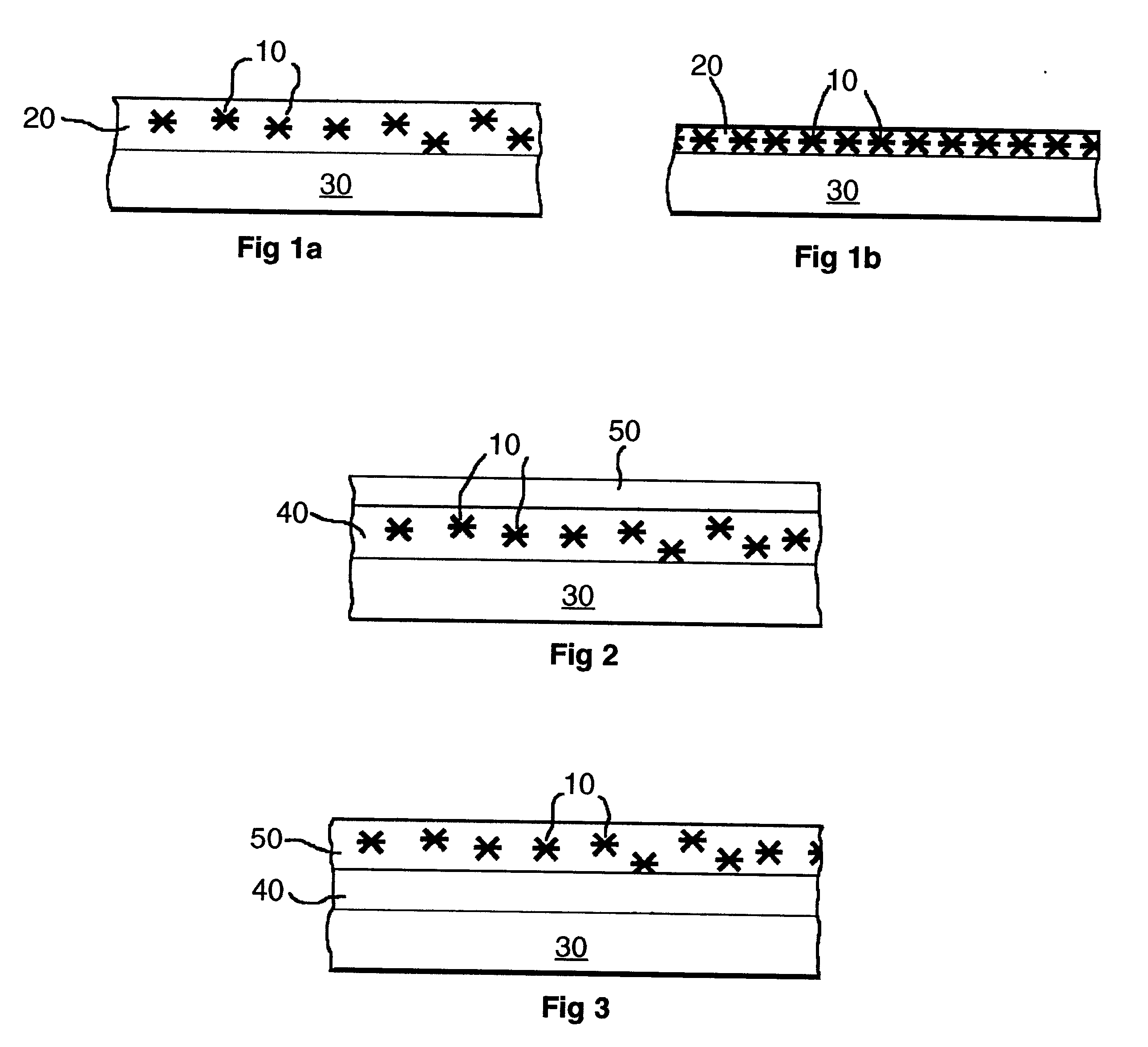Anti-copy layer utilizing spectral fragments
a spectral fragment and anti-copy technology, applied in the field of documents anti-copy films, layers, coatings, etc., can solve the problems of high production and implementation costs, high cost of production and implementation, and inability to achieve essentially true copies
- Summary
- Abstract
- Description
- Claims
- Application Information
AI Technical Summary
Problems solved by technology
Method used
Image
Examples
Embodiment Construction
A preferred embodiment of the means of anti-copy protection of the present invention is illustrated in FIGS. 1a & 1b. The invention consists of fragments 10 of a predetermined size embedded within a coating 20 of a predetermined consistency, which is affixed to the face of a document 30. In the preferred embodiment, the fragments 10 are diamond powder in the 20-30 micron range, and the coating 20 is a photographic quality lacquer. However, the fragments are not necessarily limited to this size range, and may consist of other materials with similar spectral properties, such as, but not limited to, cubic zirconia, white sapphire, quartz, yttrium aluminum garnet, spinel, etc., either natural or synthetic in origin; and the coating can consist of any other formulation with similar optical, protective and adhesive properties, such as, but not limited to, polyesters, acrylics, or clay-based coatings, etc.
The fragments 10 are dusted onto the face of the document 30. The coating 20 is then ...
PUM
| Property | Measurement | Unit |
|---|---|---|
| transparent | aaaaa | aaaaa |
| size | aaaaa | aaaaa |
| angle of incidence | aaaaa | aaaaa |
Abstract
Description
Claims
Application Information
 Login to View More
Login to View More - R&D
- Intellectual Property
- Life Sciences
- Materials
- Tech Scout
- Unparalleled Data Quality
- Higher Quality Content
- 60% Fewer Hallucinations
Browse by: Latest US Patents, China's latest patents, Technical Efficacy Thesaurus, Application Domain, Technology Topic, Popular Technical Reports.
© 2025 PatSnap. All rights reserved.Legal|Privacy policy|Modern Slavery Act Transparency Statement|Sitemap|About US| Contact US: help@patsnap.com


